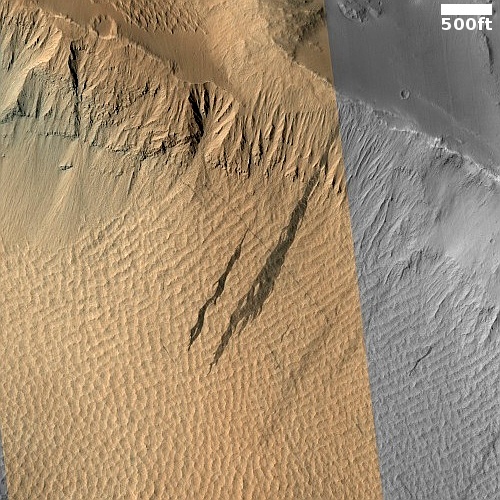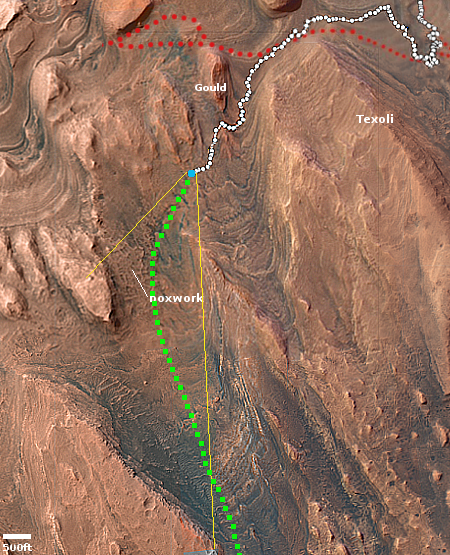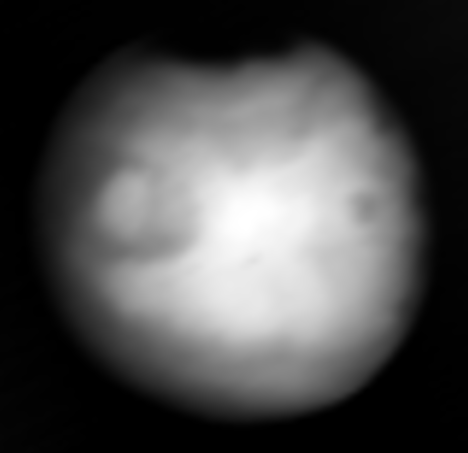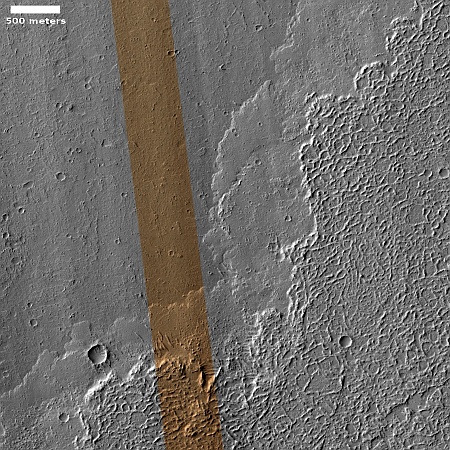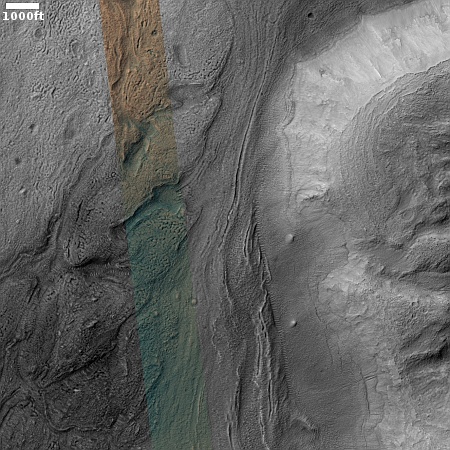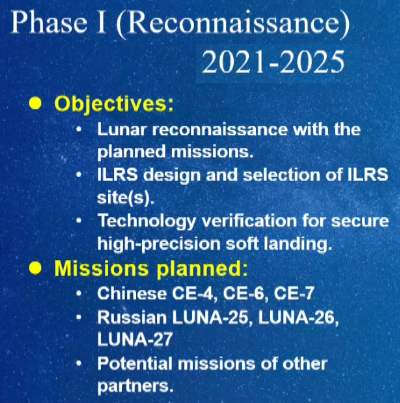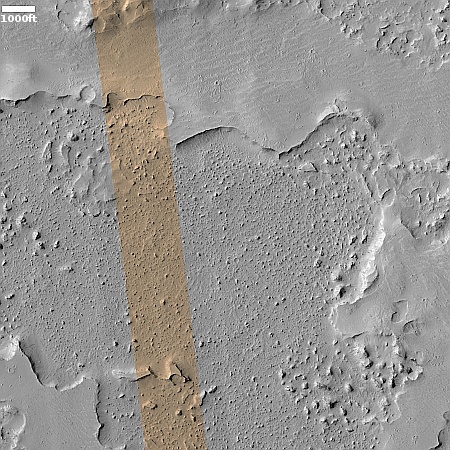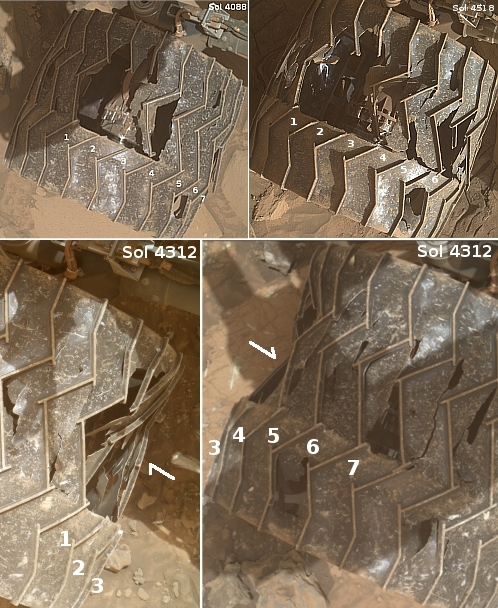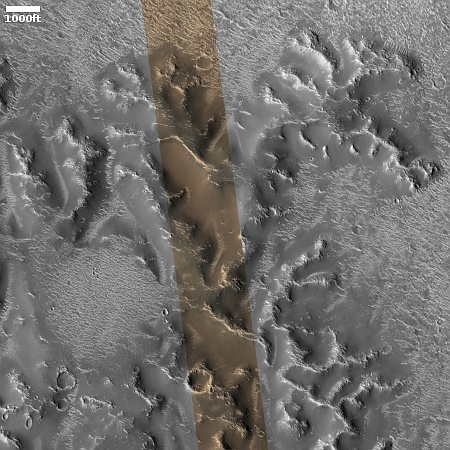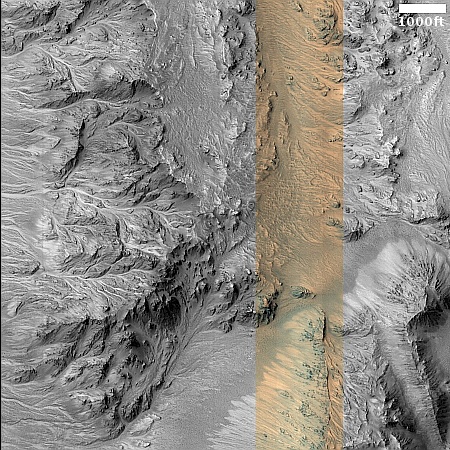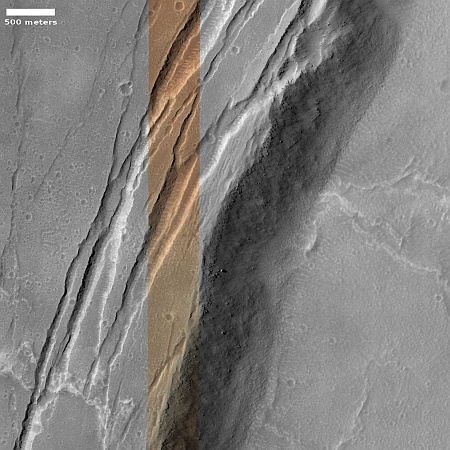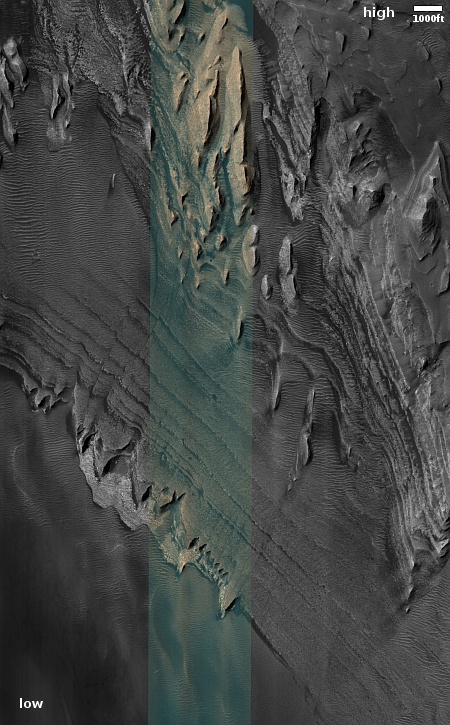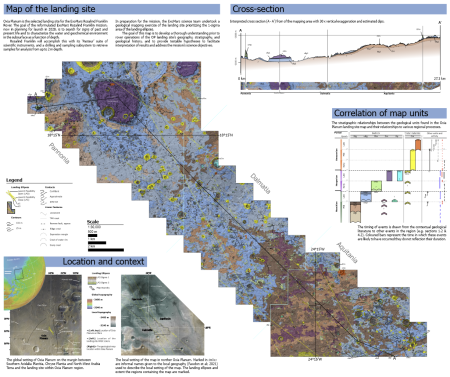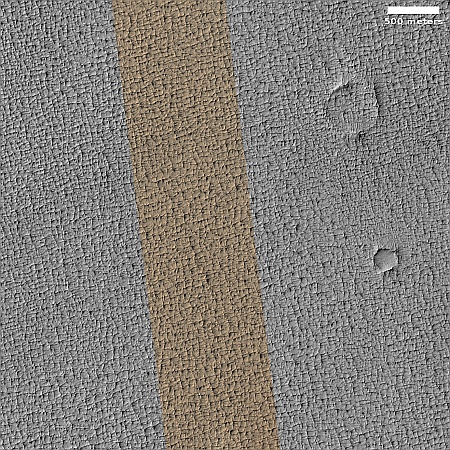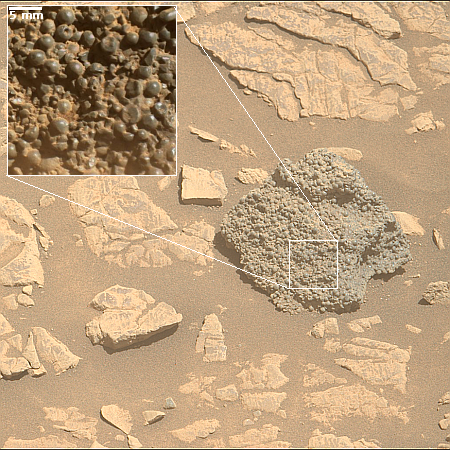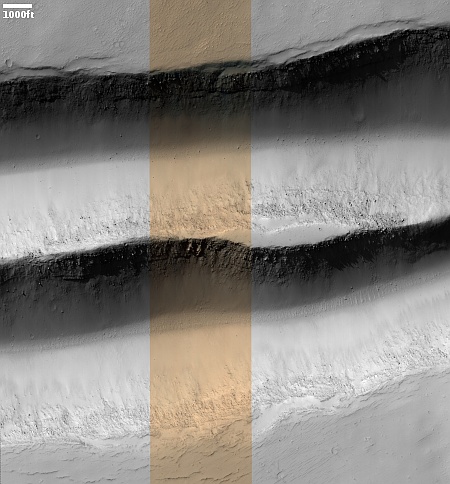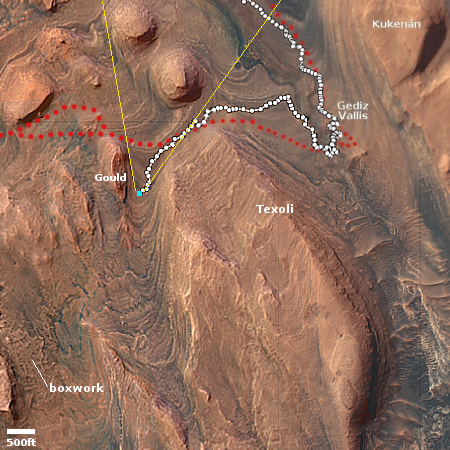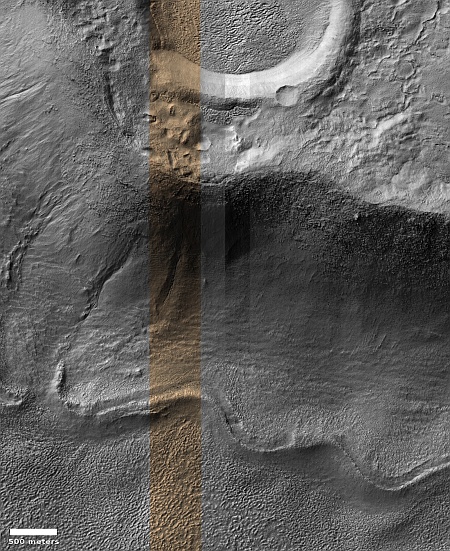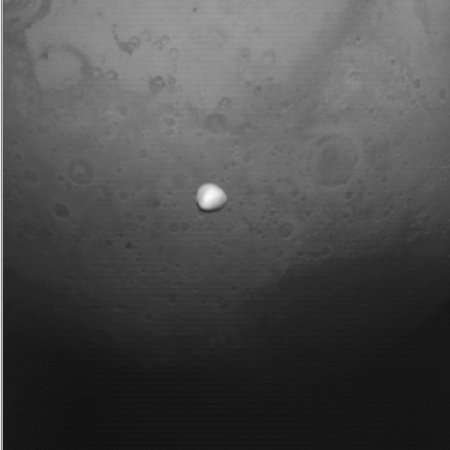Terraced Martian butte
Cool image time! The picture to the right, cropped, reduced, and sharpened to post here, was taken on April 1, 2025, by the high resolution camera on Mars Reconnaissance Orbiter (MRO).
The scientists label this as a “Layered Butte.” Seems like a good description. From top to bottom there appear to at a minimum about a dozen terraces, each of which represents a specific geological era on Mars.
I post this mostly because I think it shows us another example of the alien beauty of the Martian landscape. The scientific question of course is what do these layers represent. In a general sense, they indicate that over a long time period one by one these layers were laid down, and then over a likely equally long time period the top layers were worn away, one by one. The mesa is just a random spot where that erosion process was not complete, leaving behind this terraced 400-foot-high tower.
» Read more
Cool image time! The picture to the right, cropped, reduced, and sharpened to post here, was taken on April 1, 2025, by the high resolution camera on Mars Reconnaissance Orbiter (MRO).
The scientists label this as a “Layered Butte.” Seems like a good description. From top to bottom there appear to at a minimum about a dozen terraces, each of which represents a specific geological era on Mars.
I post this mostly because I think it shows us another example of the alien beauty of the Martian landscape. The scientific question of course is what do these layers represent. In a general sense, they indicate that over a long time period one by one these layers were laid down, and then over a likely equally long time period the top layers were worn away, one by one. The mesa is just a random spot where that erosion process was not complete, leaving behind this terraced 400-foot-high tower.
» Read more


